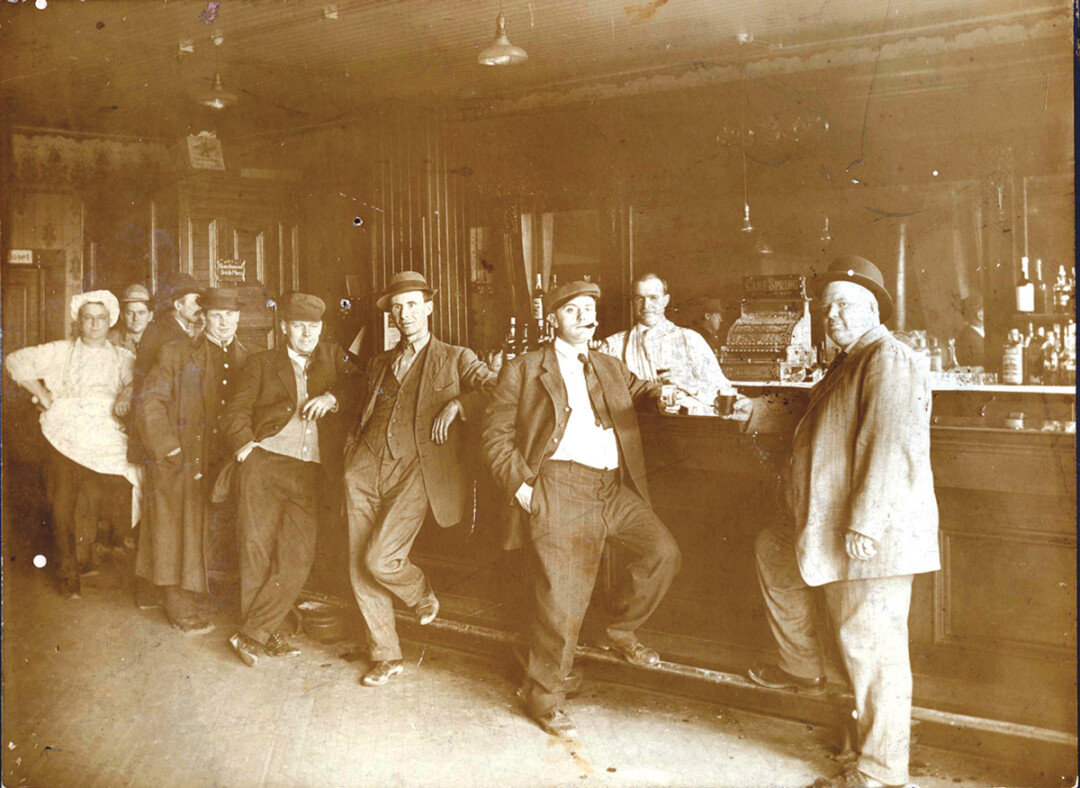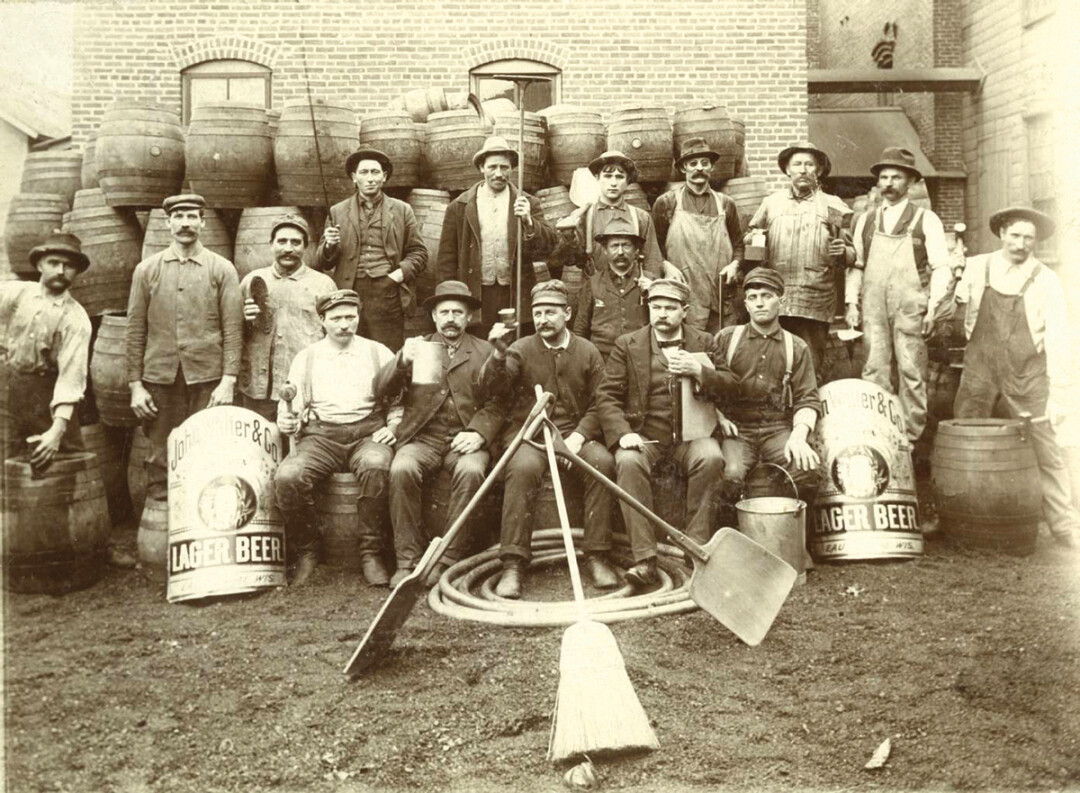Bygone Brews: Chippewa Valley breweries & beers that are only on tap in the history books
Tom Giffey, photos by Chippewa Valley Museum

The 151-year-old Jacob Leinenkugel Brewing Co. in Chippewa Falls and the more recent profusion of craft breweries in the Chippewa Valley aren’t the beginning and end of the region’s brewing history. Considering we’re in Wisconsin, considering the number of German immigrants who settled here, and considering we were once awash in thirsty lumberjacks, it’s easy to understand why the beer has been flowing in the Valley since the 1850s. Here are the stories of some of the region’s more prominent bygone breweries.
WALTER BREWING CO. (Eau Claire)
For the past nine years, the revived version of the beloved Walter’s Beer has been brewed in the Chippewa Valley by Northwoods Brewpub. The original Walter’s had its roots with the Dells Brewery, presumably named after the nearby Dells Pond, which was built in the 1870s at the intersection of Hobart and Elm streets on what was then Eau Claire’s north side. First operated by Henry Sommermeyer, it was taken over by Henry Huebner in the 1880s. John Walter bought the brewery in 1889 and referred to it as the City Brewery. Part of the brewery burned down in 1909, but Walter rebuilt nearby at 318 Elm St. In 1913, a bottle house – the only part of the brewery that’s still standing – was built. According to local historian Lois Barland, the bottle house “was one of the first in the industry to use tile brick inside for sanitation purposes.” In addition, she wrote, “The brewery was also one of the first in the United States to use steel, all-glass-lined tanks such as are now used exclusively in the trade.”
John Walter died in 1932, the year before Prohibition was repealed, and three nephews – Martin, Edgar, and Charles – bought the brewery. Just weeks after Prohibition ended in 1933, the new Walter Brewing Co. produced its first batch of beer. By 1949, the brewery had more than 50 employees and produced 75,000 barrels annually. At the time, the brewery’s brands included Family Beer, Walter’s Pilsener, Little Wally, and (naturally) Walter’s.

While its brews were originally only distributed regionally, over time Walter’s expanded its reach into northeastern Wisconsin, eastern Minnesota, and northern Illinois, including a push into the Chicago area in the late 1970s. Walter’s became a favorite of legendary Chicago newspaper columnist Mike Royko, who once named it the country’s second-best beer.
However, by the 1980s sales began to slump – blame competition from big national brands – and the Walter family decided to sell the brewery. In 1985, Michael Healy of Chicago bought Walter’s and renamed it the Hibernia Brewing Co. According to Jerry Apps’ book Breweries of Wisconsin, Hibernia’s “flagship” brew was Eau Claire All Malt Lager, which was made from Walter’s original pre-Prohibition recipe. The new operation had some successes – including the opening of a beer garden and a first-place award for Dunkel Weizen at the Great American Beer Festival – but Hibernia may have been ahead of its time as a craft brewer. In 1987, the brewery suffered from bad publicity when a shipment of unpasteurized beer was accidentally sent to some new markets. (Not a good first impression!) Hibernia went bankrupt the following year, and the brewery never produced another barrel. The main building was demolished in the early 2000s.
In 2009, however, Walter’s experienced a rebirth when Northwoods Brewpub of Eau Claire began bottling its version of the classic lager. (The copyright had expired, so the Walter’s label was up for grabs.) The “new” Walter’s was brewed with a recipe that approximated the original (many taste-testers were used, including members of the Walter family, says Northwoods general manager Sean Annis). Northwoods relocated to Osseo a few years ago, but they still make and market Walter’s – “The Beer That Is Beer.”
HUDSON ROAD BREWERY (Menomonie)
The largest brewery in Menomonie’s early days was about two miles west of the city limits along Gilbert Creek. Originally built by Roleff and Wagner, by 1888 the brewery was being operated by Swiss immigrant Gottfried Burkhardt as the Hudson Road Brewery, according to Where the Wild Rice Grows, a history of Menomonie by Larry Lynch and John Russell. The brewery produced about 60,000 barrels annually. Eventually Gottfried’s son, Louis, took over the brewery, and Burkhardt and Son operated until 1912.
Beginning in the 1870s, a smaller brewery had been located just across the Red Cedar River at the end of West 12th Avenue, on what was known as Brewery Hill. First operated by Christian Fuss and later by a Mr. Weber, the brewery had a beer garden where Galloway Creek flows into the Red Cedar. Coincidentally, both of these 19th century breweries are located not far from the contemporary Lucette Brewing Co., which opened in 2009.
EAU CLAIRE BREWERY (Eau Claire)
The Leinenkugel name is forever tied to the brewery that bears that name in Chippewa Falls, but the Leinenkugel family made its mark on Eau Claire’s brewing history, too. In 1855, Joseph Matthias Leinenkugel founded the Eau Claire Brewery (also known as the Eagle or Empire Brewery) at the northeast corner of Farwell and Madison streets in what is now downtown Eau Claire. (Joseph was the older brother of Jacob Leinenkugel, who founded a brewery upriver in Chippewa Falls in 1867.) In the 1930s, an older resident wrote the following recollection of that era: “You can realize that it took a good deal of beer just then to supply the many saloons and to satisfy the thirst of the hundreds of lumbermen, rivermen, and mill hands. They simply thronged the streets of the town when off work, looking for beer and finding plenty, judging from the number of drunken men and the street fights.” When Joseph died in 1874, his widow, Theresa, and sons, Joseph and Henry, took over the business, which produced about 1,200 barrels annually. In the 1880s, they sold it to Henry Michels, who bottled beer there until 1916.

